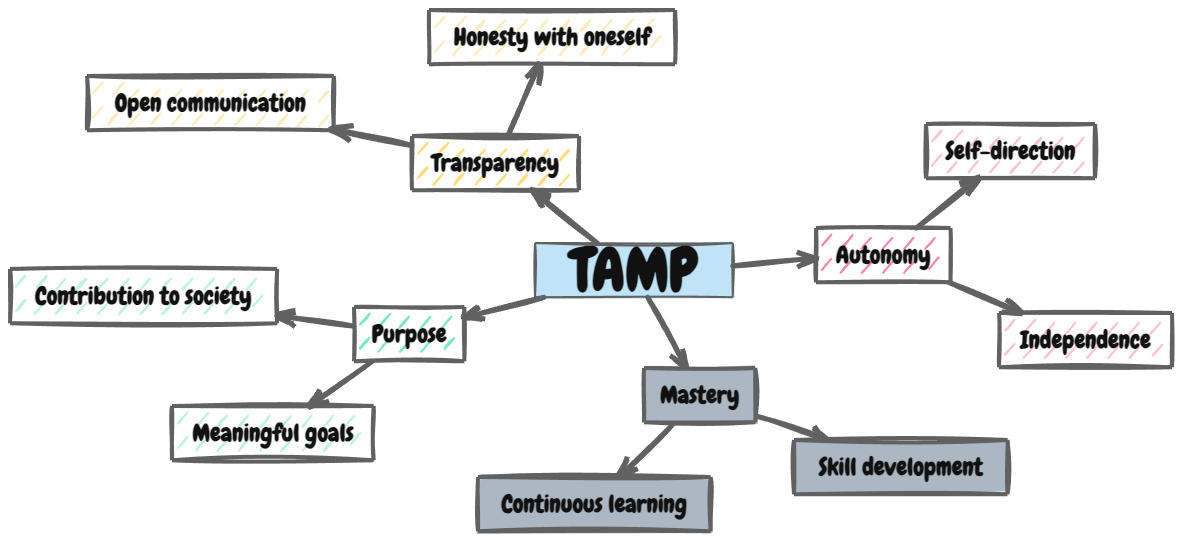We’ve talked about Transparency and Accountability—the things that help your team understand what matters outside of their view and who owns what. We also talked through Autonomy, and how leaders need to encourage and drive self-directed team members to accomplish their goals. Today we’re moving to the “M” in TAMP: Mastery.
Mastery isn’t about chasing perfection. It’s about enabling people to get better at what they do—intentionally, sustainably, and with the right kind of support.
For technical leaders especially, this can be a tricky one. We’re often caught between the need to ship fast and the desire to improve skill and process. But mastery isn’t a luxury—it’s a lever. If we want our teams to operate at a high level, we have to help them grow in a high-trust, high-autonomy way.
Mastery Is Momentum
People don’t need to be the best at something to feel mastery—they just need to see that they’re getting better. That’s where momentum comes in. The feeling of progress, of leveling up, is one of the most powerful intrinsic motivators we have. It keeps people engaged, curious, and proud of their work.
So part of our job as leaders is to remove the barriers that stall that progress. And sometimes, those barriers are systemic: legacy code, lack of time, undefined expectations. Other times, they’re personal: unclear goals, fear of failure, or even a lack of feedback.
Mastery starts with clearing the runway, not just cheering from the sidelines.
Support ≠ Soft
Supporting growth doesn’t mean lowering standards. It means making sure your expectations are clear, your feedback is actionable, and your team has room to try, fail, and improve.
In technical environments, that might look like:
- Pairing juniors with more experienced mentors—not just for onboarding, but for skill-building
- Making time for refactoring, testing, and code reviews that teach—not just gate
- Encouraging exploratory projects, cross-training, or internal demos that stretch comfort zones
- Creating psychological safety so people feel safe asking “why” or saying “I don’t know”
- Ensuring that presentation skills are treated as an important aspect of engineering development
Mastery isn’t just technical either. Leadership, communication, estimation, and collaboration are all part of what makes someone truly effective. And we can’t expect people to magically grow in those areas without some investment.
Failure Is Part of the Process
One of the biggest blockers to mastery? Fear.
If your team is afraid of being blamed, embarrassed, or isolated when something goes wrong, they’ll play it safe. And that kills growth. We have to create cultures where failure is treated as data, not just damage.
Ask questions like: What did we learn? How do we improve the system? What support was missing?
It takes discipline to reflect instead of react. But teams that learn from failure get sharper and more resilient over time.
Grow the Person, Not Just the Role
Sometimes, we focus so hard on helping people grow in their current role that we forget to ask what they actually want to master.
Career growth isn’t a ladder—it’s a landscape. Some people want to go deep in their craft. Others want to lead, mentor, or explore different specialties. When we understand that, we can shape opportunities that actually align with their long-term goals—not just the org chart.
This means having honest, ongoing conversations about development—not just performance. It means looking for patterns in what lights someone up, and then helping them pursue it without burning out or losing momentum.
Signals I Look For
Here are a few practical ways to try and support mastery across teams:
- Build feedback into the work. Make reviews, retros, and 1:1s part of the growth loop—not an afterthought.
- Reward improvement, not just excellence. A team that’s improving is more valuable than a team that’s static, even if the baseline is high.
- Protect time for learning. Carve out space for experimenting, refactoring, writing tests, or diving into new tools—even when the roadmap is tight.
- Ask what excites them. Help people find the intersection of what they’re good at and what they want to get better at.
Mastery as a Leadership Practice
This one’s personal, too. I still miss things. I still make the same mistake more than once. I still have areas where I’m actively trying to improve—because mastery isn’t just for individual contributors. It’s for all of us.
So if you want a high-performing team, build the conditions for mastery. Give people room to grow, reflect, and fail forward. Invest in momentum, not just outcomes.
Next up: the “P” in TAMP—Purpose. Why the “why” matters more than ever, and how it drives clarity, resilience, and alignment across everything your team builds.
Until then, stay curious, stay generous, and keep learning alongside your team.
Missed a post? Catch up on the full TAMP series: Transparency, Autonomy, Mastery, and Purpose (this post!).
Here’s the Introduction to the Concept, and a Wrap-Up of the series




5 thoughts on “TAMP, Part 4: Mastery – Supporting Growth Without Burning People Out”
Comments are closed.